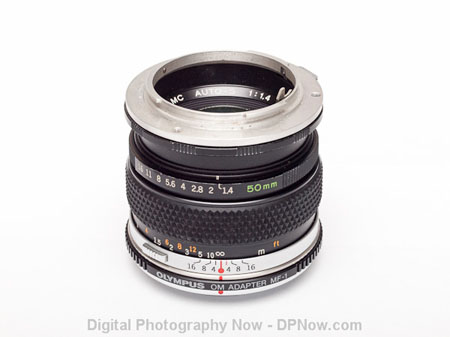
A lens with a lens mount on its filter thread, that will be reversing ring.
If you are interested in macro photography, exploring the amazing world of very small things, the cost of a dedicated macro lens may be put-off. So what about a low cost and versatile alternative - buy an old inexpensive lens from the pre-autofocus era and turn it into a great macro lens by using a reversing ring? The bonus is that you also get a good quality portrait lens into the bargain - for no extra cost apart from a lens mount adapter. This is exactly what I will be demonstrating in this article.
The concept of reversing a lens and turning it into a macro lens is quite simple. Normally, the back end of a lens focuses light onto the film plane or the sensor plane. This is a very short distance - with most SLR cameras it's less than two inches - or around 45mm. If you turn the lens around so that the front element faces the film or sensor inside the cameras, the optics work in reverse, with light entering the lens via the rear element and projected out of the front element onto the film or sensor plane. Depending on the choice of lens to use reversed, you should end up with a reversed optic that lets you focus very close and results in a magnified image.
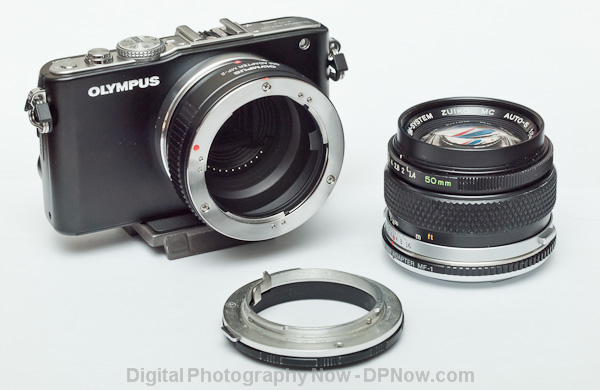
For our purposes we used three adapter rings in all! As the reversing ring was an OM-fit one, we used an OM to Micro Four Thirds adapter (on the Olympus Pen Lite E-PL3 camera above), an OM to Four Thirds adapter (mounted on the base of the OM lens) to keep the aperture stopped down, and the OM/49mm thread reversing ring (foreground).
This technique does not lend itself so well to modern lenses because, for a start, there is usually no way of controlling the aperture iris in the lens as it is no longer electronically connected to the camera body. This is why it's a good application for older, you could say 'obsolete', lenses, which have a completely manual and mechanical aperture controller in the form of an aperture ring.
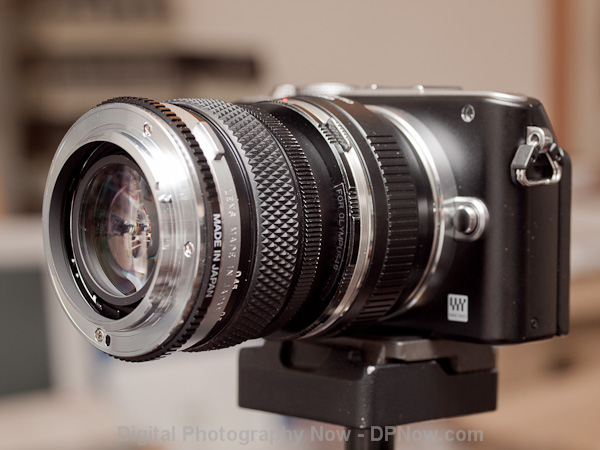
Our 30+ year old Olympus OM 50mm f/1.4 standard lens fitted to a present day Olympus Pen compact system camera using an OM reversing ring and OM/Micro Four Thirds adapter.
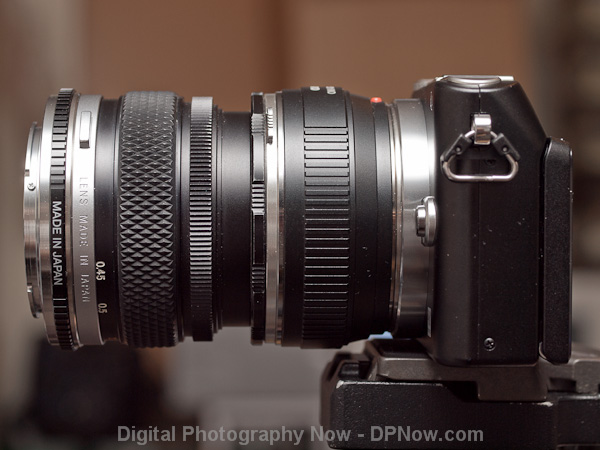
And here is a slightly different view. Note the additional adapter at the 'front' on the rear end of the OM lens. This keeps the lens stopped down according to the setting on the aperture ring.
A great choice for reversed use is the good old 50mm 'standard' lens. They are plentiful, bright, and usually of good quality. If you go for a shorter focal length, or wider angle lens, you will get greater magnification. I'd avoid zoom lenses as these are unlikely to be as optically good as a decent 'prime' or fixed focal length lens. I happened to have an Olympus OM Zuiko 50mn f/1.4 standard lens dating back to the early 80s which I bought last year for just under £60. You don't need to go for the faster f/1.4 lenses, in fact an f/1.8 is likely to be a bit sharper and more contrasty - and cheaper. 50mm OM f/1.8 lenses were produced by the million and can be snapped up for as little as £20. Nikon standard lenses are also very popular for reversing. And the make of lens does not need to match your camera body.
The reversing ring adapter
You need a reversing ring that attaches to the filter thread on the front of the lens, so you will need to know the filter thread diameter before ordering your reversing ring. The other side if the ring is the lens mount bayonet that enables the reversed lens to be attached to your choice of system camera body. You don't need to have a DSLR camera and in our example we have used an Olympus Pen compact system camera. The reversing adapter we used was an old OM adapter, so we have also used an OM to Micro Four Thirds mount adapter.
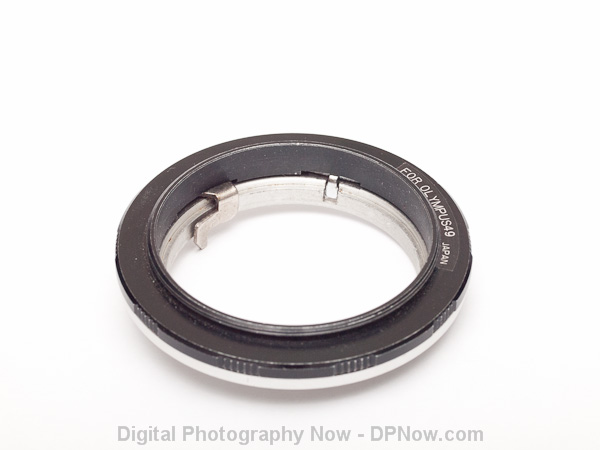
Our slightly tatty, but entirely effective, second hand Olympus OM reversing ring to fit the 49mm thread to fit the filter thread of our 50mm OM lens.

The OM mount side of our reversing ring.
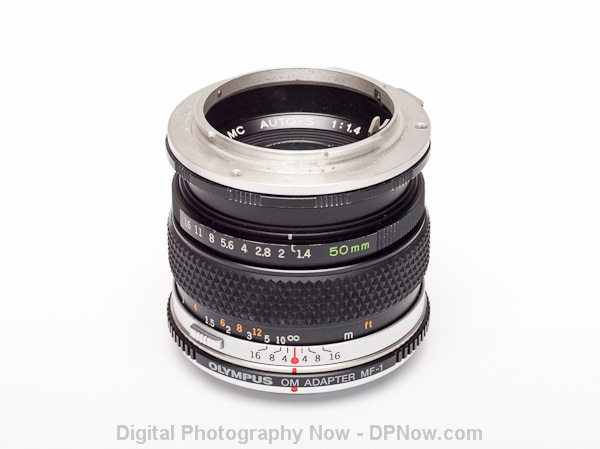
Our OM Zuiko 50mm f/1.4 lens fitted with the reversing ring at the top and an OM adapter for Four Thirds mount cameras at the other end in order to keep the aperture stopped down.
Reversing rings are widely available either on eBay or from specialist suppliers like SRB Griturn in the UK.
The reversed lens in use
So let's recap - we have our lens, an old 50mm standard lens, a reversing ring attached to the lens' filter thread, and an adapter enabling the OM mount reversing adapter to be fitted to a Micro Four Thirds system camera body. The last adapter may not be required if you can get the correct fitting reversing ring.
Carefully mount the reversed lens onto your camera body. Remember that the the filter screw thread is not designed to carry the weight of a lens. Depending on the lens you have chosen to use, adjusting the aperture ring may directly alter the aperture iris size, or you may need to press a lever on the lens to 'stop' the lens down. In our case we have used yet another adapter on the back end of the OM lens (which is now the front) as this sets the lens to stop the aperture down according to the aperture set on the aperture ring.
Focusing
You may notice that moving the focus ring does nothing except shift the barrel of the lens back and forth. The optics don't actually move in relation to the sensor or the subject. In other words you can't focus the lens itself. The only way to get your subject in focus is to move the whole camera until the subject is sharply focused. For the most precise focusing, use a live view mode or electronic viewfinder with the lens set to its widest or brightest aperture. This will give you the brightest view and also the least depth of field. With paper-thin depth of field you can very precisely focus on what you are most interested in. But don't forget to reset the aperture afterwards and be careful not to jog the camera in the process. I would recommend setting the aperture to f/8 or smaller (larger number). Most lenses will limit you to f/16, and this will produce the greatest depth of field. The use of a camera support, like a tripod or mini-pod, is highly recommended. If you are using live view on your camera's LCD screen, or an electronic viewfinder, you may be able to use a magnified view for more precise focusing. Some cameras will also maintain the brightness of the view even when the aperture is stopped down. You may need to consult the camera's manual to find these necessary aids.
Exposure
With luck, by using the Aperture Priority mode on your camera the exposure can be metered and set by the camera automatically, regardless of the aperture set and despite the fact that the camera can't communicate electronically with the lens. If this doesn't work, then try Manual exposure mode and experiment with aperture and shutter speed combinations.
Magnification
With our 50mm OM lens we were able to get approximately 1:1 reproduction. In other words the image on the sensor is roughly the same as life size. Pointing at the camera at a ruler showed that roughly 18mm was covered from left to right and the physical size of the Four Thirds sensor is 18mm wide. The lens to subject distance was roughly 95mm. By using a wide angle lens, say a 35mm or 24mm lens, reversed, you will get greater magnification, although 1:1 is also impressive and matches most dedicated macro lenses.
Finally, here are a few examples taken with out set up:
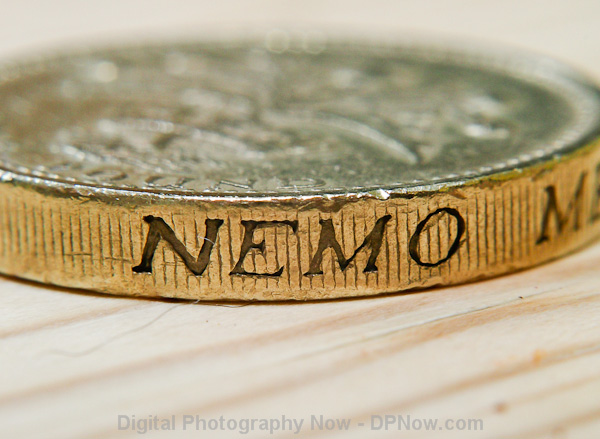
The well-worn side of a one pound coin.
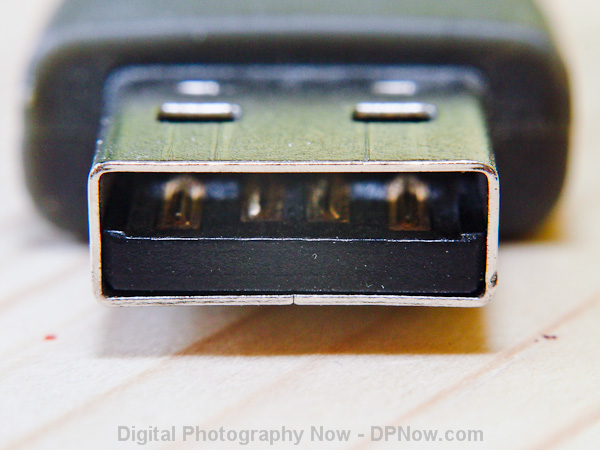
A USB data lead connector.

A ball-point pen tip, clearly showing the 'ball'.
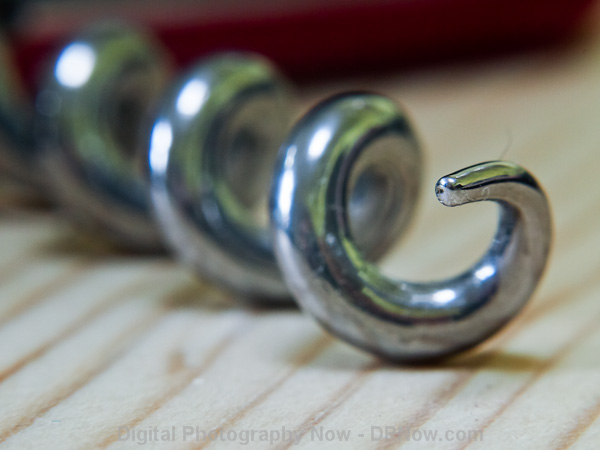
A Swiss Army Knife cork-screw.
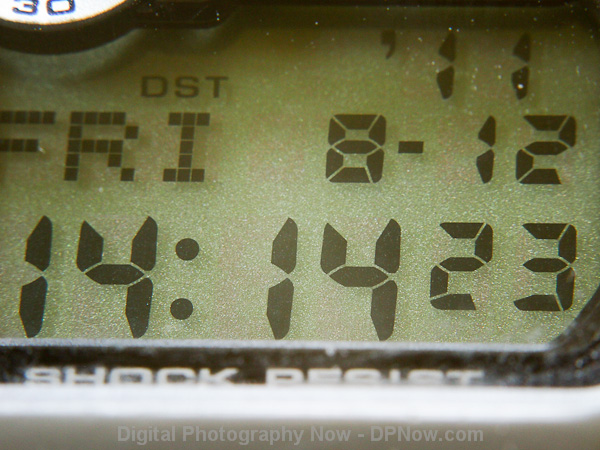
The liquid crystal display of a digital wristwatch.
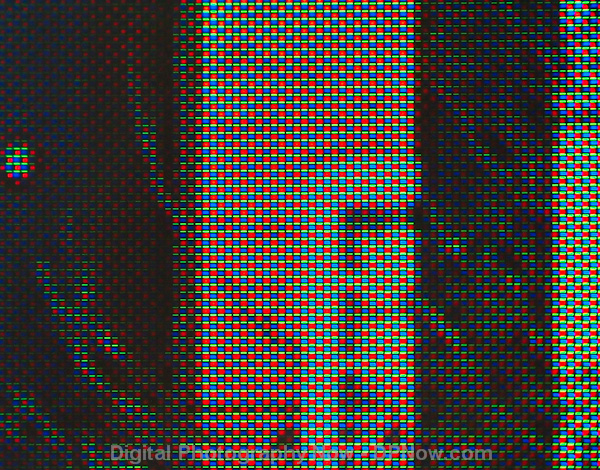
This shows the red, green and blue pixels on a computer monitor screen.
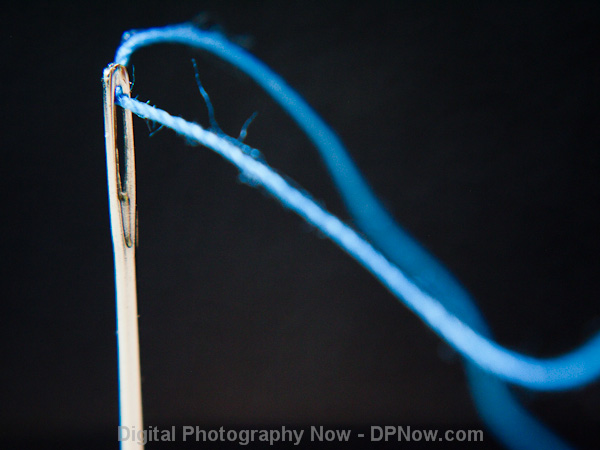
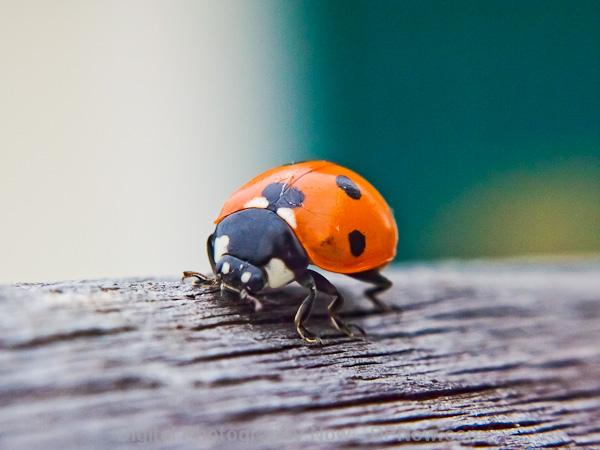
Notice the thin strip of in-focus area or the depth of field, even at f/16.
If you found this article useful and produced some pictures using a reversed lens, or if you have been doing this for years, why not get in touch and let us see some of your results? Email us via [email protected].
Reader feedback:
Discuss this story:




